The selection of the best chatbots for small business growth plays a crucial role in this evolution. As technology integration becomes more ingrained in daily business operations, the importance of chatbots has transformed into a fundamental element for companies.
The transformative impact of chatbots extends beyond mere automation; it encompasses the enhancement of customer engagement, the optimization of internal processes, and the creation of seamless, personalized experiences.
Small businesses, in particular, benefit immensely from these AI-driven assistants, as they offer cost-effective solutions to common operational challenges while fostering meaningful connections with customers.
Exploring the functionalities of chatbots it aims to demystify their role, empowering small business owners to harness their potential for growth and efficiency.
The Role of Chatbots in Small Businesses

- Resources, leverage chatbots for transformative capabilities often constrain small businesses.
- Chatbots operate at the intersection of operational efficiency and customer relations, enhancing productivity and engagement.
- Their multifaceted functionalities make chatbots integral to the holistic strategy for small business growth.
- Chatbots deliver efficient customer support, provide instant responses, troubleshoot issues, and guide users through processes.
- It ensures a seamless and immediate customer service experience, enhancing satisfaction and freeing human resources for more complex interactions.
- Beyond customer support, chatbots drive lead-generation efforts by proactively engaging with website visitors.
- AI-powered assistants capture valuable information and qualify leads in real time, streamlining the conversion process for small businesses.
- This strategic approach allows businesses to concentrate on prospects with the most significant conversion potential.
How to select the Best Chatbots for Small Business

Chatbots have emerged as indispensable tools, offering small businesses a powerful means to enhance customer interactions and streamline operations.
However, the effectiveness of a chatbot navigates the essential criteria that small businesses should consider when selecting the best chatbots, delving into the crucial factors of affordability, ease of integration, and scalability.
Affordability
Cost-effectiveness is crucial for small businesses, and a chatbot solution’s affordability is pivotal to aligning with budget constraints.
When evaluating chatbot providers for small businesses, consider subscription fees, implementation expenses, and supplementary charges. Optimize the investment by making informed decisions based on the organization’s financial realities.
Ease of Integration
Integration ease is a crucial criterion, determining how well a chatbot can seamlessly integrate into the existing tech stack, including a CRM, POS, Cloud Infrastructure, etc.
Small businesses can swiftly incorporate chatbots into their operations by minimizing disruptions and complexities associated with integration, ensuring a smooth and efficient workflow.
Scalability
Scalability is a fundamental consideration, especially for small businesses with aspirations for growth. Selecting chatbots that can scale alongside the company’s evolving needs is significant.
Whether accommodating increased customer interactions, expanding product offerings, or adapting to changes in business processes, a scalable chatbot ensures that the technology remains an asset rather than a limitation.
Understanding the scalability features of different chatbot solutions empowers small businesses to make forward-thinking choices that align with their long-term growth strategies.
Importance of chatbot features

Beyond their basic functionalities, the true power of chatbots lies in their features. The significance of three pivotal chatbot features — Natural Language Processing (NLP), Customization, and Analytics — and how they contribute to unlocking the full potential of businesses.
Transforming Conversations into Meaningful Interactions
Natural Language Processing (NLP) is the cornerstone of effective communication between chatbots and users. Unlike conventional bots that operate within rigid, predefined structures, NLP empowers chatbots to understand, interpret, and respond to human language nuances.
This feature enables a more natural and intuitive interaction, mimicking human-like conversations. Chatbots equipped with NLP can provide personalized and contextually relevant responses by comprehending user intent, context, and sentiment.
It enhances the user experience and allows businesses to build meaningful connections with their audience, fostering trust and satisfaction.
Tailoring the Bot Experience to Business Needs
The ability to customize chatbot functionalities is a game-changer for businesses aiming to create a unique and tailored user experience. Customization empowers businesses to adapt chatbots to specific industry requirements, brand personalities, and user preferences.
From the tone of conversation to the range of supported services, customization ensures that the chatbot aligns seamlessly with the business’s identity and objectives. This flexibility extends to crafting personalized user journeys, optimizing engagement, and providing a more relevant and targeted experience.
Customization transforms chatbots from generic tools to strategic assets capable of addressing the specific needs of diverse industries and businesses.
Data-Driven Insights for Informed Decision-Making
Analytics in chatbots is not merely an add-on; it is a critical feature that empowers businesses with actionable insights. Chatbot analytics provide a wealth of data that informs decision-making processes by tracking and analyzing user interactions, preferences, and behaviors.
Companies can gain a comprehensive understanding of customer preferences, identify emerging trends, and measure the effectiveness of their chatbot strategies.
This data-driven approach allows continuous refinement of the chatbot’s functionalities, ensuring it remains aligned with user expectations and business goals. Analytics transform chatbots into strategic assets, providing a data-driven foundation for ongoing optimization and improvement.
Top Picks for Small Businesses

In the dynamic landscape of small businesses, the strategic integration of chatbots has become pivotal for staying competitive and fostering growth. Navigate through the top picks in chatbot solutions, shedding light on their unique features and contributions to small business success.
HubSpot
HubSpot is at the forefront of our top picks, a chatbot solution that seamlessly integrates with Customer Relationship Management (CRM) and marketing tools.
HubSpot’s chatbot transforms customer interactions by providing a unified platform for managing customer relationships, marketing efforts, and chat interactions.
The seamless integration ensures small businesses can streamline their workflows, creating a cohesive and data-driven approach to customer engagement.
Drift
Drift emerges as a standout solution in creating personalized customer interactions and excelling in lead qualification. Drift’s chatbot goes beyond traditional interactions by intelligently understanding user intent and preferences.
By facilitating real-time conversations and proactively engaging visitors, Drift enhances customer satisfaction and is a robust tool for identifying and qualifying leads, empowering small businesses to focus on high-potential prospects.
Tars
Tars brings a unique focus to the table, emphasizing the creation of conversational landing pages. This examination showcases how Tars revolutionizes user engagement by turning landing pages into interactive conversations.
The spotlight is on Tars’ ease of use and remarkable lead conversion capabilities. Small businesses can leverage Tars to create immersive and personalized visitor experiences, fostering increased user engagement and, consequently, higher conversion rates.
MobileMonkey
Delving into MobileMonkey, this section explores its diverse features, including chat blasts, drip campaigns, and lead nurturing capabilities. MobileMonkey stands out for its versatility, offering small businesses the tools to execute targeted marketing campaigns.
From broadcasting messages to segmented audiences to nurturing leads through automated workflows, MobileMonkey empowers businesses to leverage chatbots for comprehensive marketing strategies.
ManyChat
ManyChat takes center stage with its power-packed features designed to facilitate dynamic conversations.
Small businesses can harness ManyChat to automate customer interactions and create engaging conversational experiences that drive user engagement and loyalty.
Botpress
We are exploring Botpress customization capabilities, allowing small businesses to tailor chatbot solutions to their unique requirements. Whether creating bespoke workflows or integrating with existing systems, Botpress provides a flexible and scalable platform.
Botpress empowers small businesses to implement chatbots that align seamlessly with their specific operational and customer engagement needs.
StackedAI
StackedAI showcases the integration of Artificial Intelligence (AI) in chatbot solutions. StackedAI leverages AI to enhance chatbot functionalities, from understanding user queries to providing intelligent responses.
Small businesses can benefit from StackedAI’s advanced capabilities, ensuring that their chatbots evolve alongside the dynamic nature of customer interactions and operational requirements.
Implementation Tips for Small Businesses

The successful integration of these AI-powered assistants requires a thoughtful and strategic approach. It aims to provide practical implementation tips for small businesses, offering valuable insights into seamlessly incorporating chatbots into existing business processes and optimizing their performance.
Start with a Clear Strategy
Before implementing chatbots, define clear objectives. Determine the tasks you want chatbots to handle: customer support, lead generation, or internal process automation. A well-defined strategy ensures the integration aligns with your business goals and delivers tangible benefits.
Select the Right Chatbot Platform
Choosing the appropriate chatbot platform is crucial. Consider factors like customization options, ease of use, and integration capabilities. Platforms like HubSpot, Drift, and Tars offer user-friendly interfaces and robust functionalities suitable for small businesses.
Integration with Existing Systems
Ensure seamless integration with your existing systems, including CRM tools, communication platforms, and other essential business software. A well-integrated chatbot becomes a cohesive part of your operations, providing a unified approach to customer interactions.
Staff Training
Invest in comprehensive training programs for your staff. Familiarize them with the chatbot’s functionalities, responses, and escalation protocols. A well-trained team ensures they can effectively collaborate with the chatbot, maximizing its potential and providing a seamless customer experience.
Human-Agent Collaboration
Balance the role of chatbots and human agents. While chatbots handle routine queries and tasks, human agents can focus on more complicated issues that require a personalized touch. Establish clear guidelines for when and how human intervention is necessary.
Regularly Update and Optimize
Chatbots should evolve with your business. Regularly update their responses based on new information and customer interactions. Ascertain areas for enhancement and optimization by analyzing performance data, ensuring that the chatbot maintains its efficacy and remains in line with evolving business requirements.
User-Friendly Interface:
Prioritize a user-friendly interface for both customers and staff. An intuitive design ensures users interact effortlessly with the chatbot, enhancing the overall user experience and increasing adoption rates.
Provide Clear Communication
Transparent communication is critical. Communicate the role of chatbots to your customers and staff. Set expectations regarding the chatbot’s capabilities and let users know when they interact with a bot versus a human agent.
Monitor and Analyze Performance Metrics
Implement robust analytics tools to monitor the chatbot’s performance. Track key metrics such as response time, user satisfaction, and task completion rates. Analyzing these metrics provides valuable insights for continuous improvement.
Feedback Mechanism
Establish a feedback mechanism for both customers and staff. Encourage users to provide feedback on their interactions with the chatbot. Staff feedback is essential for refining the chatbot’s performance based on real-world experiences.
How Small Businesses Can Stay Ahead by Adopting Evolving Chatbot Capabilities

One avenue through which they can not only keep pace but also lead is by adopting the evolving capabilities of chatbots. These artificial intelligence-driven conversational agents have transcended their initial roles, evolving into dynamic tools with enhanced functionalities.
Small businesses can streamline operations and elevate customer experiences by embracing these growing capabilities.
The key to staying ahead lies in recognizing the expanding scope of chatbot capabilities.
Beyond traditional customer support and lead generation, modern chatbots now boast advanced features such as natural language processing, sentiment analysis, and personalized recommendations.
Small businesses can leverage these functionalities to offer more personalized and context-aware interactions, creating a more engaging and satisfying customer journey.
Additionally, as chatbots become more adept at understanding user intent and preferences, businesses can gather valuable insights to tailor their products or services, ultimately driving more targeted and effective marketing strategies.
By embracing these progressive functionalities, small enterprises establish themselves as leaders in customer-centric innovation, cultivate allegiance, and attain a competitive advantage.
Conclusion

- Transformative Role: Chatbots go beyond conventional views, fostering operational excellence and customer engagement.
- Empowerment Through Information: The article provides insights into crucial chatbot features for informed decision-making.
- Top Solutions: Highlighted chatbot solutions, including HubSpot, Drift, Tars, MobileMonkey, and others, are discussed for affordability and scalability.
- Practical Tips: The post offers concise implementation tips for seamlessly integrating chatbots into small business operations.
- Strategic Technological Leverage: By strategically leveraging chatbots, small businesses enhance efficiency, streamline operations, and foster meaningful customer interactions for sustainable growth.
